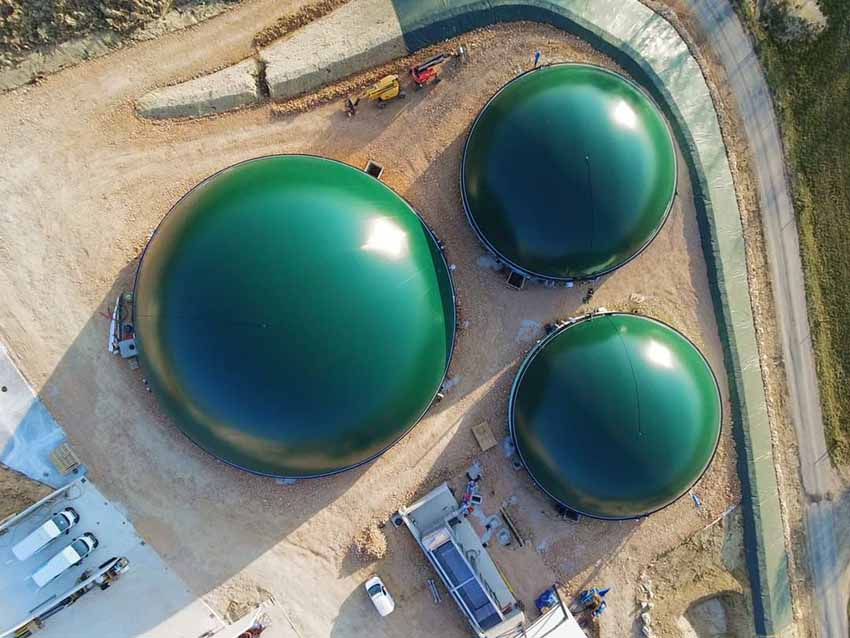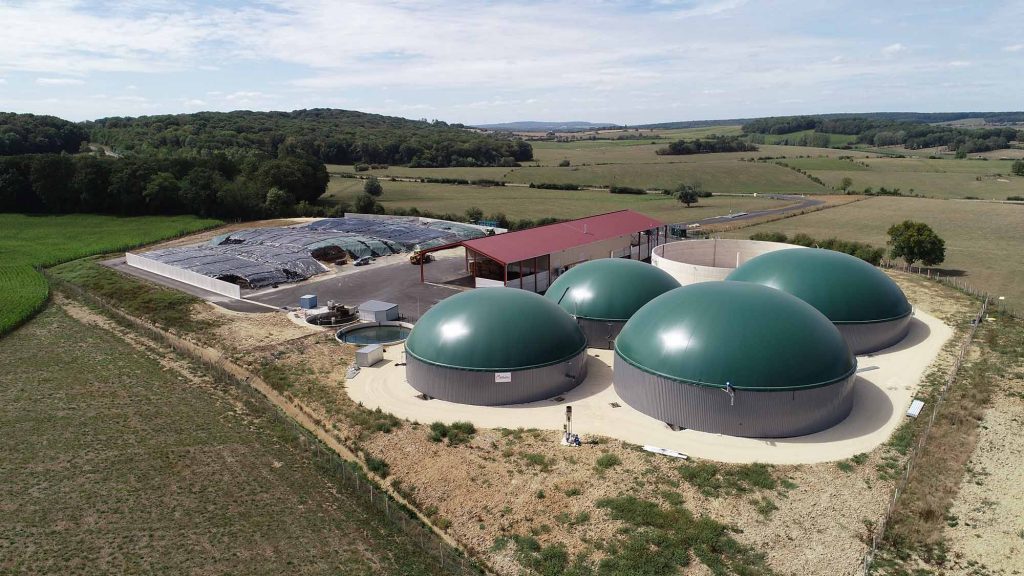Methalac is an engineering firm specialized in the process of anaerobic digestion. Anaerobic digestion is a biological process that breaks down organic matter in the absence of oxygen. It involves microorganisms that convert biodegradable materials such as food waste, animal manure, and brown water into biogas (a mixture of methane and carbon dioxide). What is left over from the treated organic materials is a nutrient-rich natural fertilizer called digestate.
The company is an EPC which means they study, size and design the biogas production plant, install all necessary equipment and technology on site, and assist the operator during the first few months of commissioning.
With over 10 years of experience, their extensive expertise makes them able to enhance biogas production from a wide range of different feedstock. Methalac also offers maintenance, service and biological monitoring contracts.
Currently Methalac biogas has over 50 employees and has built over 60 anaerobic digesters in 12 years.
Easy Engineering: What are the main areas of activity of the company?
METHALAC: Our main area of activity is the agricultural and agro industrial anaerobic digestion. As a matter of fact, our customers are farmers, farm associations, food processing industries, or renewable energy project developers seeking to generate incomes from organic residues such as cow manure, left over cereal grains, intermediate crops, slaughterhouses residues, etc.
With the various concerns of waste management, we have also been building digesters focused on the management of food waste which would mostly be unsold goods from supermarkets, fat/grease from processed food factories etc.

E.E: What’s the news about new products?
METHALAC: Methalac is expert in co-digestion. We can mix several types and changing organic residues in our digesters to enhance gas production performance and to allow a greater flexibility for our customer to secure a wide variety of feedstocks depending on their availability.
Furthermore, our thermal engineers have developed and installed customed pasteurization systems to a dozen of our biogas sites that treat sub animal feedstock at a temperature of 70°C for an hour with mixing technology and buffer tanks before these organic materials are fed to the digester to ensure a total pathogen free digestate to be returned to the field and nourish the soil.
Last but not least, we’re extending the lifespan of the very early European biogas plants, reviving old infrastructures and engineering refurbishments, improvements, optimizations and site expansions. We successfully managed to integrate modern and efficient technology to biogas units built way before the very existence of Methalac. We created in this manner a new community of very happy partners, giving the greatest care to their running units during the intervention of Methalac technicians.
E.E: What are the ranges of products?
METHALAC: According to the scope and needs of our project partners, we’re installing biogas plants with engines that can generate heat and power (CHPs) or with biomethane upgrading technology that can inject gas directly into the natural gas network. Our installations currently produce between 80 Nm3/h to 600 Nm3/h of 99,9% pure biomethane and our installations with a combine heat and power engine (design to produce electricity) have a power range from 236 kW to 1,6 MW.
E.E: At what stage is the market where you are currently active?
METHALAC: We are currently strongly active in Europe (building 10 to 12 new biogas plants per year) and in North America with the creation of our subsidiary company in Chicago and the opening of our representative office in Montreal.
In Europe: EU has set a target of achieving a 32% share of renewable energy in the final energy consumption by 2030, and biogas is expected to contribute significantly to this target.

According to a report by the European Biogas Association and the European Biomass Association, the installed capacity of anaerobic digesters in the EU increased from 7.4 GW in 2014 to 10.5 GW in 2019, representing an average annual growth rate of around 7%. The report also highlights a significant potential for further growth, with estimations suggesting that the EU could support up to 100 GW of installed biogas capacity by 2050.
In North America: According to a report by the American Biogas Council, the installed capacity of anaerobic digesters in North America grew from 184 MW in 2000 to 2,200 MW in 2019, representing an average annual growth rate of around 16%. The report also notes that there is significant potential for further growth, with estimations suggesting that North America could support up to 13,000 MW of installed biogas capacity by 2040.
E.E: What can you tell us about market trends?
METHALAC: Both markets where Methalac operates are different for various reasons such as concerns for renewable energies, the size of the infrastructures, the agricultural methods, the economic models, and carbon credit markets, etc.
Nonetheless, both markets have increased their focused on renewable energies and view biogas production as a way to prevent methane emissions in the atmosphere.
In Europe:
The agricultural sector is prominent in Anaerobic digestion since farmers look for ways to manage waste and generate additional revenue. This is driving growth in the anaerobic digesters market, as these facilities can produce renewable energy and provide farmers with a source of income from waste management fees, the sale of biogas and save fertilizer costs.
Farmers can count on subsidies and incentives from the European Union and governments to invest and build anaerobic digesters.
In North America:
Governments and various states/Provinces have raised concerns about renewable energy and green houses gases reduction. Various Programs and Policies are allocating resources for the development of unit producing green energy.
Therefore, anaerobic digesters are increasingly being used for waste management purposes in, particularly in the agricultural and food processing sectors or municipal green wastes.
There is a growing focus on innovation in the North American biogas market, with companies developing new technologies and solutions to improve the efficiency of biogas production and carbon credit generation.

E.E: What are the most innovative products marketed?
METHALAC: Various products are coming out every year, we have seen water treatment system capable of treating manure and turn it into clear water.
Generators burning the biogas for electricity are getting more and more efficient as they create less heat loss. Our process is evolving every year with the addition of these new technologies in our designs. The development of our biology department is also critical to ensure the treatment of the new various types of identified feedstock.
E.E: What estimations do you have for 2023?
METHALAC: Methalac’s French entity has already received more project studies and signed deals during this 2023 first quarter than it did the last whole year! Now that renewable gas tariffs have stabilized project partners invest massively in secure income plans to build biogas plants with attractive 20-year energy contracts with utilities.
We are working on several projects in North America and aim to sign our first deal by the end of the year.


